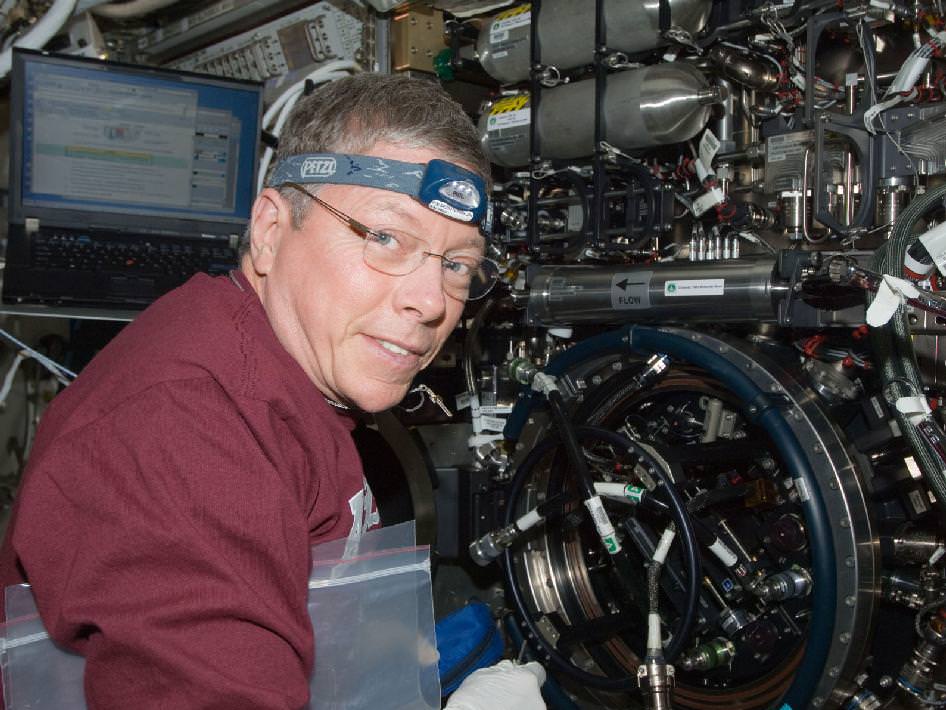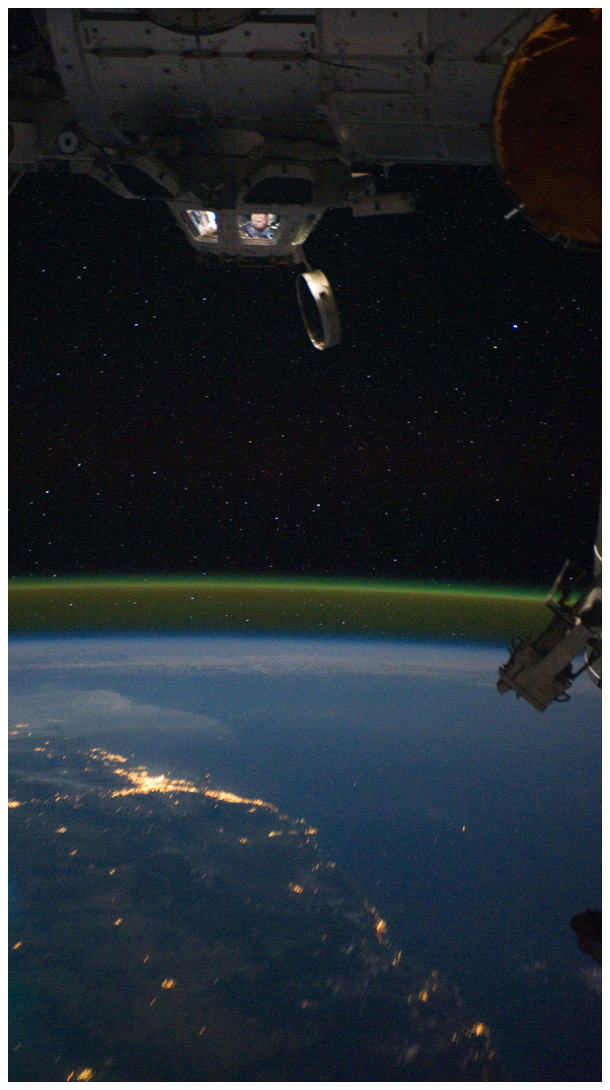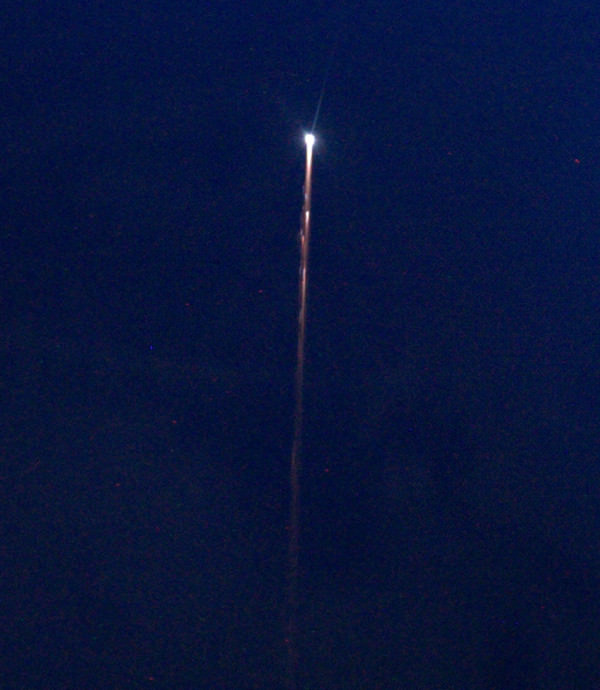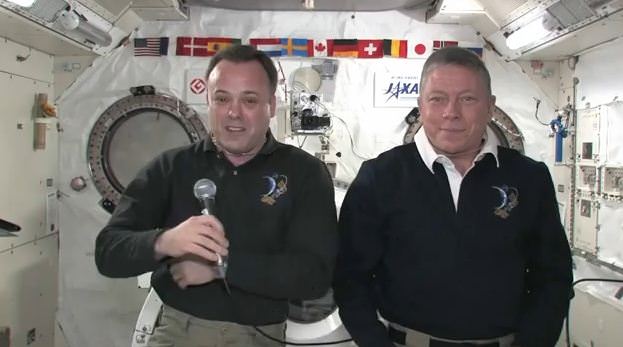[/caption]We recently launched a new “Ask” feature here at Universe Today. Our inaugural launch featured Dr. Alan Stern, Principal Investigator for the New Horizons mission to Pluto and the Kuiper Belt.
Following up on the success of our first “Ask” feature, we’ve followed up with a new installment featuring Expedition 29 commander Mike Fossum. We collected your questions and passed them along to Mike who graciously took the time to answer them.
Here are the questions picked by you, the readers, and Fossum’s responses. Special thanks to NASA and Mike Fossum for their participation.
1.) Living on the ISS is sometimes said to be a difficult experience – if you could make any one change to the ISS to make it more comfortable, what would it be?
Mike Fossum: “Get the transporter working – it would be great to be home for the weekend.” Fossum also added, “I loved living and working there (The ISS) and there’s very few things I’d change. I had a great window view and my own personal quarters. I guess if anything I missed being able to sit in a chair – that and being able to have a cup of coffee (instead of out of a bag) and read the newspaper in the morning.”
2.) As a trained astronaut, what are your thoughts on the feasibility of making space flight a routine for normal civilians ( besides tourists) especially with regard to interplanetary/beyond earth orbit flights?
Mike Fossum: “I think we’ll see low Earth-orbit very soon.” Fossum also mentioned, “I was born a few months after Sputnik’s launch, the changes in spaceflight over the past 54 years are staggering. The potential for changes over the next fifty years is unimaginable.” Fossum also had a parting thought on the rise of commercial space travel, “I have a nagging voice telling me to say “be careful”, we’ve learned hard and costly lessons”.
3.) While in the Earth’s shadow, could you see the stars, constellations and planets? If you could, did they look any better or brighter?
Mike Fossum: “Oh, Yes! The key is to be in a place where you can dark adapt – any sunlight overpowers night vision.” Fossum mentioned that during some “down” time on a spacewalk, he was able to turn off his helmet lights and immerse himself in the “3-d feeling” of being in the stars. Describing the quality of the views, Fossum stated, “The Milky Way was clear, and no twinkle in stars. The different colors of stars were more intense”.
4.) After a typical stay on the ISS, how long does it take an astronaut to recover from the effects of weightlessness?
Mike Fossum: “There’s a great deal of recovery in the first three weeks. Balance, running, walking, I’d say I’m at about 90%” Fossum mentioned one other side effect of his stay on the ISS – apparently he’s in better physical shape than before he left. Fossum speculated that the improvements in his physical shape were due to the rigorous exercise routines he performed during his stay on the ISS.
5.) What would you say is the strongest asset that each of the space fairing countries brings to the table when it comes to our forward progress into space as a species?
Mike Fossum: “The Russians have a different design process than we (The United States) do. They evolve, rather than start over.” Fossum added, “Looking at their station module design, they took stuff that worked from MIR and improved upon it, they analyzed and tested and broke stuff and added more steel. Americans analyze and analyze – it was a real shock to NASA on how Russia built things.” Fossum mentioned that in 2008, he helped install the JAXA Kibo module on the International Space Station and was impressed by the efficiency of JAXA engineers.
Regarding some of the other partner nations participating in the ISS, Fossum mentioned, “ESA has the best of German efficiency and Italian flexibility.” Fossum also discussed the Canadians niche in robotics, stating that they’ve been leaders who are proud of their work. Fossum cited the success of the remote manipulator arm on the space shuttles, as well as the “big arm” on the ISS and the DEXTRE manipulator.
Fossum shared a final thought regarding all the nations participating in the ISS, stating, “There’s a common passion for space among the big partners on the ISS.” Fossum also mentioned to “Look at history” regarding Russia, Germany, Italy, Japan and the U.S, emphasizing that nations who were at war with each other not that long ago are working together to achieve common goals in space.
This wraps up our latest “Ask” feature. Once again we’d like to thank Mike Fossum and NASA for taking the time to answer your questions.





